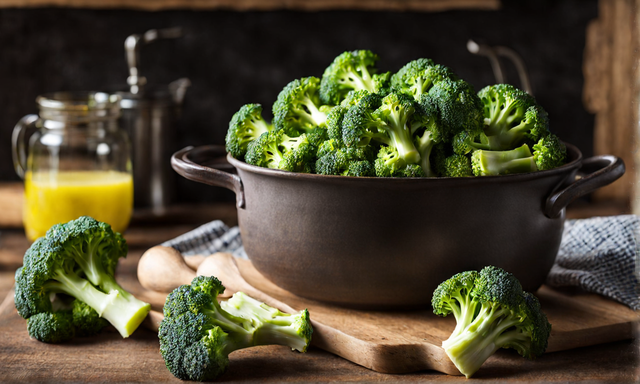Broccoli is renowned for its nutritional benefits, packed with vitamins, minerals, and antioxidants. But when it comes to preparing broccoli, does the method of cooking impact its nutrient content? Specifically, many wonder: does baking broccoli remove its nutrients? This article delves into the science of baking broccoli and its effects on nutritional value.
Understanding the Nutritional Profile of Broccoli
Before we explore the impact of baking, it’s essential to understand what nutrients broccoli contains.
- Vitamins: Rich in vitamins C, K, and A.
- Minerals: A good source of minerals like potassium and iron.
- Fiber: Contains high levels of dietary fiber.
- Antioxidants: Offers a range of antioxidants, including sulforaphane.
The Science Behind Cooking and Nutrients
Cooking can alter the nutrient composition of vegetables. The effect varies depending on the cooking method.
- Water-soluble vitamins (like vitamin C and some B vitamins): These are the most susceptible to degradation during cooking.
- Fat-soluble vitamins (like vitamins A, D, E, and K): These are more stable during cooking.
- Minerals: Generally stable, but methods involving water can lead to leaching.
Baking Broccoli: A Nutritional Perspective

Baking, which involves cooking food using prolonged dry heat, can impact the nutrients in broccoli in several ways.
1. Effect on Water-Soluble Vitamins
- Vitamin C Loss: Baking at high temperatures may lead to a reduction in vitamin C content.
- Preserving B Vitamins: Since baking doesn’t involve water, it can help retain B vitamins better than boiling or steaming.
2. Maintaining Antioxidants
- Antioxidants Like Sulforaphane: Research suggests that baking might help in retaining or even enhancing the availability of certain antioxidants.
3. Impact on Fiber
- Dietary Fiber: The baking process generally has minimal effect on the fiber content of broccoli.
Baking Broccoli: Temperature and Time Factors
The duration and temperature of baking play a critical role in nutrient preservation.
- Optimal Temperature Range: Baking at moderate temperatures can help minimize nutrient loss.
- Cooking Time: Longer cooking times can lead to more significant nutrient degradation.
Comparing Baking with Other Cooking Methods
To understand the impact of baking on broccoli’s nutrients, it’s useful to compare it with other cooking methods like boiling, steaming, and stir-frying.
- Boiling: Often leads to significant nutrient loss, especially water-soluble vitamins.
- Steaming: Generally considered one of the best methods for preserving nutrients.
- Stir-Frying: Can preserve nutrients effectively, especially if done quickly at high temperatures.
Incorporating Baked Broccoli into a Balanced Diet

Despite some nutrient loss, baked broccoli remains a nutritious addition to a balanced diet.
- Dietary Diversity: Combining broccoli with other vegetables can help offset any nutrient loss.
- Pairing with Nutrient-Dense Foods: Including foods rich in vitamins and minerals in the same meal can enhance overall nutrient intake.
Tips for Maximizing Nutrients When Baking Broccoli
While some nutrient loss during baking is inevitable, there are ways to minimize this and retain most of the goodness of broccoli. Here are some practical tips:
1. Shorten Baking Time
- Quick Baking: Cook broccoli for a shorter period to reduce nutrient loss, especially for vitamin C.
- Al Dente Texture: Aim for a tender but firm texture, which indicates minimal cooking.
2. Optimize Baking Temperature
- Moderate Temperatures: Bake broccoli at a medium temperature to reduce the degradation of heat-sensitive nutrients.
3. Use Minimal Processing
- Keep It Whole: Larger pieces of broccoli retain more nutrients than finely chopped ones.
- Avoid Peeling: The skin contains a significant amount of nutrients.
Delicious Baking Recipes for Nutrient-Rich Broccoli
Baking broccoli doesn’t have to be boring. Here are a couple of recipes that are both nutritious and delicious.
1. Simple Baked Broccoli
- Ingredients: Broccoli florets, olive oil, salt, pepper, and your choice of seasonings.
- Method: Toss broccoli with olive oil and seasonings, and bake in a preheated oven at a moderate temperature for about 15-20 minutes.
2. Cheesy Baked Broccoli
- Ingredients: Broccoli florets, cheese (such as cheddar or parmesan), olive oil, garlic powder, salt, and pepper.
- Method: Mix broccoli with olive oil, garlic powder, salt, and pepper. Halfway through baking, sprinkle cheese on top and continue until fully melted.
The Bottom Line
While baking can lead to some nutrient loss in broccoli, particularly vitamin C, it remains a healthy cooking method. By baking at moderate temperatures and for shorter durations, you can preserve most of the nutrients. The key is to enjoy a variety of cooking methods and a diverse diet to ensure you get all the nutrients your body needs.
Incorporating Baked Broccoli into Your Diet
- As a Side Dish: Serve it alongside your favorite protein.
- In Salads: Add it to salads for a nutritious crunch.
- As a Snack: Enjoy baked broccoli florets as a healthy snack.
Final Thoughts on Baking Broccoli
Baking broccoli is a healthy, convenient, and versatile cooking method. While it’s true that some nutrients may be lost during baking, the impact can be minimized. The resulting dish is not only packed with nutrients but also rich in flavor. So, the next time you’re pondering over how to cook your broccoli, consider baking it for a tasty, nutrient-rich addition to your meal.
Remember, the journey to a healthy diet isn’t about perfection; it’s about making better choices one meal at a time. Baked broccoli, with its array of nutrients and delicious taste, is certainly a choice you won’t regret.

